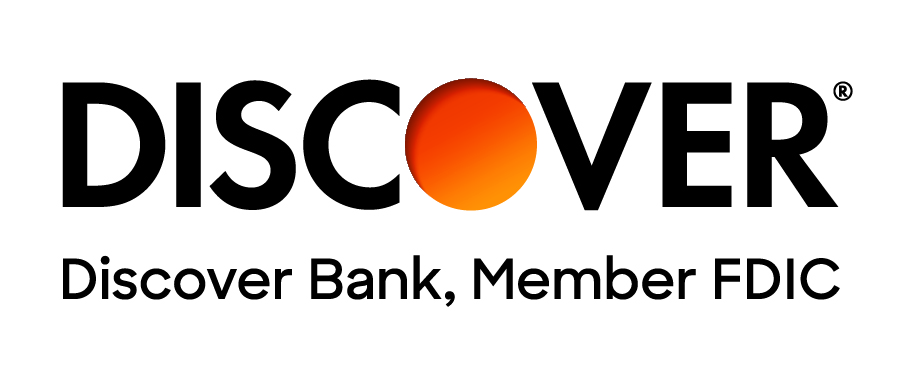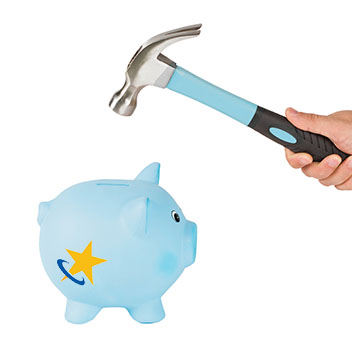The repayment options for your student loans depend on whether they are federal or private.
The federal student loan program offers a wide array of repayment plans—over ten different options! While having numerous choices is beneficial, it can be overwhelming to determine which one is best for you.
If you have private student loans, the private student loan repayment plan options will vary between loans, and chances are you chose a repayment plan option when you first borrowed the loan. However, it may be worthwhile to look at your loan terms to understand your repayment obligations and options.
Federal Student Loan Repayment
Federal student loans come with a variety of options for repayment, including income-driven and non-income-driven options. Income-driven repayment plans determine your monthly payment based on your income, family size, state of residence, and sometimes (depending on the plan and how you file your taxes) the combined income of you and your spouse. While non-income-driven repayment options are more traditional and will base your monthly payments on your outstanding debt and the repayment term of your loan.
Let’s go over the different plans available to you in the federal student loan program.
Income-Driven Repayment Plan Options
Federal student loans may be eligible for a variety of repayment plans, including income-driven repayment plans. These plans are designed to help make your student loan debt easier to manage by reducing the amount you pay each month.
Revised Pay-As-You-Earn Repayment (REPAYE)
Key Features:
- Up to 20-year term; if all your federal student loans were taken out for undergraduate study
- Up to 25-year term if any of your federal student loans were taken out for graduate or professional study
- Monthly payments capped at 10% of your discretionary income
- Your payments could be more than your 10-year Standard Repayment plan amount
- Only Direct Loans are eligible (there is an exception, Direct PLUS loans made to parent borrowers, and Direct Consolidation Loans used to pay off a Parent PLUS Loan are not eligible to be repaid under REPAYE)
- Interest subsidy: Yes, for subsidized and unsubsidized loans – If your monthly payment does not cover the monthly accruing interest on your loan, the government will cover all accruing interest not paid by your monthly payment on subsidized loans for the first three years under this plan, and then 50% for the rest of your repayment term. For unsubsidized loan funds, the government will be 50% of your interest not covered by your monthly payment for the entire repayment term.
- You need to recertify your income and family size each year
Additional Information:
- You will likely pay more interest than under the standard 10-year repayment term
- If your income goes up, your monthly payment could be more than your 10-year Standard Repayment amount
- Your remaining loan balance is forgiven after 20 or 25 years of qualifying monthly payments
- You can use this plan if you're trying to get Public Service Loan Forgiveness (PSLF)
- Your spouse’s income and outstanding federal student loan debt are factored in determining your monthly payment, regardless if you file your taxes married-separately or married-jointly
Pay-As-You-Earn Repayment (PAYE)
Key Features:
- Up to 20-year term
- Monthly payments capped at 10% of your discretionary income and will never be more than your 10-year Standard Repayment amount
- Must have a partial financial hardship to qualify (in other words, your 10-year Standard Repayment Amount if greater than 10% of your discretionary income)
- You must have borrowed your first federal student loan on or after Oct. 1, 2007 and received a Direct Loan disbursement on or after Oct. 1, 2011
- Only Direct Loans are eligible (there is an exception, Direct PLUS loans made to parent borrowers, and Direct Consolidation Loans used to pay off a Parent PLUS Loan are not eligible to be repaid under PAYE)
- Interest subsidy: Yes for subsidized loans only for a limited time – If your monthly payment does not cover the monthly accruing interest on your loan, the government will cover all accruing interest on subsidized loans for the first three years under this plan. This plan also limits the amount of interest that can be capitalized to 10% of your principal balance.
Additional Information:
- You will likely pay more interest than under the standard 10-year repayment term
- Your monthly payment never be more than your 10-year Standard Repayment amount
- Your remaining loan balance is forgiven after 20 years of qualifying payments
- You can use this plan if you're trying to get Public Service Loan Forgiveness (PSLF)
- Your spouse’s income and outstanding federal student loan debt are only factored in determining your monthly payment if you file your taxes married-jointly. If you file your taxes separately, only your income and federal student loan debt are factored.
Income-Based Repayment (IBR)
Key Features:
- Up to 20-year term, if you're a new borrower on or after July 1, 2014
- Up to 25-year term, if you're not considered a new borrower on or before July 1, 2014
- Monthly payments capped at 10% (new borrowers) or 15% (not new borrowers) of discretionary income. Must have a partial financial hardship (in other words, your 10-year Standard Repayment Amount if greater than 10% (new borrower) or 15% (not new borrower) of your discretionary income)
- FFELP and Direct Loans are eligible (there is an exception, Direct PLUS loans made to parent borrowers, and Direct Consolidation Loans used to payoff a Parent PLUS Loan are not eligible to be repaid under IBR)
- Interest subsidy: Yes, for subsidized – If your monthly payment does not cover the monthly accruing interest on your loan, the government will cover all accruing interest not paid by your monthly payment on subsidized loans for the first three years under this plan
Additional Information:
- You will likely pay more interest than under the standard 10-year repayment term
- Your monthly payment will never be more than your 10-year Standard Repayment amount
- Your remaining loan balance is forgiven after 20 (new borrower) or 25 years (not new borrower) of qualifying monthly payments
- You can use this plan if you're trying to get Public Service Loan Forgiveness (PSLF)
Income Contingent Repayment (ICR)
Key Features:
- Up to 25-year term
- Monthly payments capped at 20% of discretionary income or the amount you would repay on a fixed payment plan over 12 years, adjusted according to your income
- There is no income threshold or need to demonstrate a partial financial hardship
- No monthly payment cap, meaning your payments could be more than your 10-year Standard Repayment plan amount
- Only Direct Loans are eligible (there is an exception, Direct PLUS loans made to parent borrowers are not eligible to be repaid under ICR, unless they are consolidated into a Direct Consolidation Loan)
- Parent PLUS Loan borrowers must consolidate with a Direct Consolidation Loan to be eligible
- Interest subsidy: None
Additional Information:
- You may pay more interest than under the standard 10-year repayment term
- If your income goes up, your monthly payment could be more than your 10-year Standard Repayment amount
- Your remaining loan balance is forgiven after 25 years of qualifying monthly payments
- You can use this plan if you're trying to get Public Service Loan Forgiveness (PSLF)
For FFELP Loans Only: Income-Sensitive Repayment (ISR)
Key Features:
- 10-year term (except consolidation loans).
- Monthly payments based on a fixed percentage of your gross monthly income between 4% and 25%
- Available only to FFELP loans
- No interest subsidy
Additional Information:
- If you have FFEL Program loans owned by the U.S. Department of Education (ED), contact your loan servicer
- If you have FFEL Program loans that are not owned by ED, contact your lender.
- Not eligible for Public Service Loan Forgiveness (PSLF)
How to Apply for an Income-Driven Repayment Plan
It’s important to explain a bit about the application process. If you want to switch your federal student loan repayment plan to an income-driven option, you will complete an application with your loan servicer. There is one application for all of the income-driven plan options, you can either choose a specific income-driven plan, or you can opt to have your loan servicer choose the plan with the lowest monthly payment.
There is no fee to apply or complete the application. If you are being contacted by an organization requesting you to share your personal information or asking you to pay a fee, you may be dealing with a third-party debt scam company. Do not share any of your information with these companies. If you have any questions about your account, eligibility, or costs, contact your loan servicer through a phone number provided by a trusted source.
If you choose to repay your student loan under an income-driven repayment plans, you will need to provide income, state of residence, and household size information to your loan servicer—that’s how they will determine your monthly payment. They will use that information to determine your discretionary income.
What is Discretionary Income?
The U.S. Department of Education will calculate your discretionary income to determine your monthly payment for most income-driven repayment plans. Most income-driven repayment plans will need to determine 10% or 15% of your discretionary income.
For the purposes of most all income-driven repayment plans (only exception is the income-contingent repayment play), your discretionary income is the difference between your adjusted gross income and 150% of the poverty line for your state of residence and family size.
For an income-contingent plan, your discretionary income is the difference between your adjusted gross income and 100% of the federal poverty line for your state of residence and family size.
What Is My Monthly Payment Under an Income-Driven Repayment Plan?
Once you determine your discretionary income, you will need to look at your chosen repayment plan to determine what percentage of your discretionary income is used to determine your payment.
This amount is also important for plans that require you to have a “partial financial hardship”. A partial financial hardship is when your 10-year Standard monthly payment amount is more than your respective percentage of your discretionary income.
This may be easier to understand as an example:
- Unmarried borrower with a child seeking to repay under a PAYE plan
- Monthly Income: $5,500
- Family size: 2
- 150% of federal poverty line: $2,178
- Federal student loan debt: $40,000 with 5% interest rate
- Monthly payment under 10-year Standard Plan: $424.26
- Discretionary income: $3,322 ($5,500 - $2,178)
- 10% of discretionary income for PAYE: $332.20
- Partial financial hardship: Yes (10-year Standard Plan $424.26 is greater than $332.20)
- Monthly payment: $332.20
Federal poverty line numbers used are for example purposes only. Borrowers while similar situations as described in the example should discuss their actual discretionary income and monthly payment amounts with their loan servicer.
10% of your discretionary income IDR plans:
- REPAYE PAYE New borrower IBR
15% of your discretionary income IDR plan:
- Not new borrower IBR
20% of your discretionary income IDR plan:
- ICR
Am I considered a “new borrower” on or after July 1, 2014 for IBR plan?
To be considered a “new” borrower for IBR, you first started borrowing after July 1, 2014, or you had no outstanding federal student loan balance when you received a Direct Loan on or after July 1, 2014.
Income-Driven Repayment Annual Recertification
If you are repaying your federal loans under an income-driven repayment plan, you will need to annually recertify your income and household size information. This is incredibly important that you complete this by your recertification requirement. More about these consequences below.
When is Your Recertification Deadline?
Your recertification deadline comes up once a year, it’s essentially your anniversary of switching to an income-driven repayment plan. You can find your recertification deadline in your student loan account, and you will hear from your loan servicer a few months before your deadline. So be sure to read all the emails and messages your servicer sends you!
Once you know when your recertification deadline is, it doesn’t hurt to set up a calendar reminder! There could be consequences if you fail to complete recertification on-time.
How to Recertify Your Information
Every year the U.S. Department of Education requires you to provide updated income and household size information. If you had changes to your income or household size, your monthly payments will be updated to reflect the changes. Your payment could go up or down depending on your situation.
In order to recertify your income and household size information you need to go to StudentAid.gov to submit an application online, or you can request a paper application to complete your request. If you have any questions, it’s best to contact your loan servicer.
My Income Changed, Do I Need to Wait Until My Recertification Date?
You do not need to wait for your income-driven repayment plan recertification date in order to provide updated income information to your loan servicer. If you’ve experience a change in your financial circumstances, you can also go to StudentAid.gov to complete an application to have your monthly payment recalculated based on your current circumstances.
You would not select “Annual Recertification” you would select the option to have an immediate adjustment to be made to your repayment plan.
My Family Size Has Changed, Do I Need to Wait Until My Recertification Date?
New baby or marriage? Well, your family size could also affect your repayment amount. If you’ve had a baby or adopted a child, your family size will increase. You can also make this update in your account before your annual recertification date. Adding a new child to your household size will likely decrease your monthly payment and will not require additional income reporting. This change could be in your favor.
If you got married, you can make this adjustment as well since it will also increase our family size, but you may want to proceed with caution. Remember, some IDR plans require you to report spousal income information, so this may not be in your favor to update this information before your annual recertification. You are not required to make this update before your annual recertification. Depending on your plan, or if your spouse has federal student loan debt, you may want to run some numbers before you make these changes.
What Happens if You Forget to Recertify?
If you forget or submit the information late, you could feel a financial hit. Consequences could include capitalization of outstanding interest, and potentially a monthly payment based on your 10-year standard payment amount, depending on the IDR plan you are enrolled in. Even if you contact your servicer because you realize you missed recertification, they may be limited in their options to help you resolve the consequences. And for borrower’s with auto-payments, if your payment amount increases and you are not prepared, you could overdraft your account as a result of failing to recertify your IDR plan.
Under the IBR and PAYE plans, interest is not capitalized (or added to your principal balance) until you leave the repayment plan, or you fail to recertify your income by your annual deadline. Likewise, the REPAYE plan will also capitalize unpaid interest if you fail to recertify by your annual deadline.
Why does capitalization matter so much? Well, federal student loans assess daily interest using the simple daily interest calculation. Your daily interest charges are calculated based on your outstanding principal balance. Federal student loans do not assess or charge you interest on unpaid interest. However, if that unpaid interest is capitalized and it’s added to your principal balance, that means your outstanding principal balance increases. When your principal balance increases, that means your interest charges also increase.
More>>> How Does Student Loan Interest Work
In addition to interest capitalization, your monthly payment can be drastically affected. Under the IBR, ICR, or PAYE plan, if you don’t recertify by your deadline, you will remain in your payment plan, but you will be required to pay your 10-year Standard Repayment monthly payment until you fix the situation. Under the REPAYE plan if you fail to recertify by your deadline, you will be switched to a different repayment plan where your payment will no longer be based on your income. Your monthly payment will be affected until you fix the situation.
So do not put this off, recertify your information as soon as you receive the first reminder from your loan servicer!
*COVID-19 Pandemic Student Loan Debt Relief Guidance for IDR Annual Recertification
As part of the administrative forbearance due to the COVID-19 pandemic on federal student loans held by the US Department of Education. Borrowers have not and will not be required to complete annual recertification during the relief period. Servicers will alert borrowers of their new recertification date before your next annual recertification is due.
Make sure your contact information is up to date with your loan servicer! We highly recommended that you update your contact information with your loan servicer so you don’t miss this important correspondence!
Non-Income-Driven Repayment Plan Options
The Department of Education also offers non-income-based repayment plans. These plans offer a variety of options for borrowers to repay their student loans.
Standard Repayment
Key Features:
- Up to 10-year term (between 10 and 30 years for consolidation loans)
- At least a $50 minimum monthly payment required
- Fixed monthly payment
Additional Information:
- You pay less interest because the term is shorter than other repayment plans
- Your monthly payment will be higher than other repayment options
- Payments under a 10-year Standard Repayment Plan may count as an eligible payment for Public Service Loan Forgiveness
Graduated Repayment
Key Features:
- Up to 10-year term (a three-year extension if a loan balance remains because of a variable interest rate) (within 10 to 30 years for Consolidation Loans)
- At least a $25 minimum monthly payment required
- Payments start out low and gradually increase, usually every 2 years, however no one payment can be 3x larger than any other payment
Additional Information:
- You pay more interest than under the standard 10-year repayment plan
- Your monthly payment will initially be lower than under Standard Repayment but may increase to more than your Standard Repayment amount
- Payments under this plan do not count towards Public Service Loan Forgiveness
Extended Repayment (Without Consolidation)
Key Features:
- Up to 25 years At least a $50 minimum monthly payment
- Payment can be graduated or fixed
- Must have at least $30,000 in a respective federal student loan program (FFELP or Direct Loans) to be eligible to repay under this program
- A borrower must have started borrowing after October 7, 1998, or must have had no outstanding balance on a loan before taking out a loan after October 7, 1998
Additional Information:
- You pay more interest than under the 10-year Standard Repayment Plan
- Your monthly payment will be lower than under Standard Repayment
- Payments under this plan do not count towards Public Service Loan Forgiveness
Standard Repayment for a Direct Consolidation Loan
Key Features:
- Up to 30-year term, depending on the amount you owe in total outstanding educational debt (while you can’t include private student loans in your Direct Consolidation, you can count the balance towards your total education debt to increase your repayment term)
- At least a $50 minimum monthly payment
- Only able to consolidate loans under the Direct Loan program
Additional Information:
- You pay more interest than under the standard 10-year repayment plan
- If you are extending your repayment term beyond 10 years, your monthly payment will be lower than your 10-year Standard Repayment Plan, however you will increase the total amount you will repay
- Payments under this plan will only count if you are under a 10-year repayment term – any longer repayment term payments will not count towards Public Service Loan Forgiveness
Public Service Student Loan Forgiveness
Public Service Loan Forgiveness (PSLF) allows you to have the remainder of your federal student loans forgiven after making 120 qualifying monthly payments. In order to take advantage of PSLF you must:
- Have Direct Loans (or consolidated ineligible federal loans (like FFELP or Perkins) into a Direct Consolidation Loan)
- Repay your loans under an income-driven repayment plan
- Make 120 qualifying monthly qualifying payments, while Working full-time for a qualifying employer(s)
Qualifying employers may include:
- Federal government
- State government
- Local government
- Tribal government
- Eligible 501(c)(3) non-profit organizations
- Other approved public service organizations (this can’t be assumed; you need to receive confirmation from the U.S. Department of Education that your employer is eligible)
ALERT: PSLF Limited Waiver Opportunity
On Oct. 6, 2021, the U.S. Department of Education (ED) announced a limited waiver opportunity for PSLF program rules. Under the limited waiver opportunity, borrowers could receive credit for past payments which would not have been previously classified as qualifying payments.
The limited waiver essentially waives all requirements except the employment requirement. If you have FFEL or Perkins loans, you will still be required to consolidate your loan with a Direct Consolidation Loan by Oct. 31, 2022. However, any payments made on your federal student loans, under any repayment plan (partial, full, or late), on any FFEL, Perkins, or Direct Loan, will count towards your 120 qualifying payments.
Like stated before, the employment requirement still stands. You need to be employed by an eligible employer (government, 501(c)(3) not-for-profit, or other not-for-profit organization which qualifies), and working full-time. You can still qualify for the full-time requirement if you are working multiple part-time jobs (that totals at least 30 hours per week) with eligible employers.
Student Loan Cancellation and Discharge
In extreme cases, you may qualify to have your federal student loans discharged. Here are some circumstances that may qualify you for federal student loan discharge.
- Total and permanent disability
- Death
- Identity theft (False Certification of Student Eligibility or Unauthorized Signature/Unauthorized Payment Discharge)
- Closed school
If you believe our loan should be discharged due to one of these circumstances, it’s best to reach out to your servicer to complete the appropriate forms.
Student Loan Deferment and Forbearance
Loan deferment is a temporary period when you don’t make payments on your loans. You have to apply and be approved for deferment. If you have Direct Subsidized Loans and Perkins Loans, the federal government pays any interest that adds up during the deferment. If you have Direct Unsubsidized Loans, you are responsible for paying any interest that adds up during the deferment.
Loan forbearance is another temporary period when you either make reduced payments or don’t make payments on your loans. You would typically request forbearance if you are experiencing financial difficulty.
Deferment and forbearance are good loan management tools and can help you avoid student loan default.
Federal Student Loan Consolidation
If you’d like to simplify your repayment process by combining multiple student loan payments into one, you may want to explore a Direct Consolidation Loan through the Department of Education. With a Direct Consolidation Loan you can roll one, some, or all of your federal student loans into one new loan. Parents that have Parent PLUS Loans and their own student loans may also consolidate these loans together.
With a Direct Consolidation Loan, you will not lower your interest rate (as you might by refinancing your student loans with a private lender.) Instead, your new interest rate will be a weighted average interest rate, meaning it will be based on the existing interest rates of the loans you wish to consolidate.
More >>>How to Calculate Weighted Average Interest Rate
Private Student Loan Repayment
There are five primary repayment options available when it comes to private student loans. Not all options may be available from all lenders, just be sure to read each loan’s terms and conditions to understand the options being offered to you. These include:
Immediate Repayment (Full Principal and Interest)
Immediate repayment means you would start repaying both the principal and interest on your loan every month while you’re in school. It basically means you just enter repayment right away. The benefit to this, assuming you can afford this option, is you’d end up paying your loan off much faster and would save a considerable amount of money in interest costs over the life of the loan.
Interest Only Repayment
A common choice among students, interest only payments means you just pay the amount of interest that accrues on your loan every month. You would not be making a dent on your principal balance, but this option does mean you would avoid unpaid interest from being added on top of your outstanding principal balance through capitalization.
If outstanding interest is capitalized on to your principal balance, your outstanding principal balance would increase. Your principal balance is used to determine the amount of interest you are accruing every day. In other words, if your outstanding principal balance increases, the more interest you will be charged. So this option helps you keep the cost of your loan down.
Flat Payment (Partial Payments)
Lenders may offer to schedule a low, fixed monthly payment while you are in school. Some lenders may even talk about a partial payment. Whatever the name, know this. Any payment that is less than a regular monthly payment of principal and/or accrued interest is not going to reduce the actual loan balance.
This repayment option will simply help you reduce the amount of interest that remains outstanding if your payment doesn’t cover accruing interest, or it will help pay down some of your outstanding principal balance if it covers interest and a bit more. And it can certainly help you avoid having too much interest added (capitalized) on top of your outstanding principal balance at the start of repayment, thereby increasing the overall cost of the loan.
Even if your lender does not place you on a partial payment plan or flat payment plan, you can elect to send money whenever you are able. Just double-check to make sure your lender doesn’t have any pre-payment penalties; most private student loans do not have pre-payment penalties. You may want to consider doing so if you come into extra cash throughout the year, such as a tax refund or birthday or holiday cash.
Deferred Repayment
If you are unable to make any payments while in school, no worries. You will be given the option of simply postponing payments altogether. Your lender would place your loan(s) in a deferred status and bill you for regular monthly payments after you graduate or drop below half-time enrollment and complete your grace period. Make sure you read the terms and conditions with this option.
This type of repayment option most aligns with the way federal student loans work.
Graduated Repayment Option
Some lenders, like Sallie Mae, may offer a Graduated Repayment Period on certain types of private student loans. You can request this after you graduate (or drop below-half-time enrollment) or grace period ends. This option lets you pay a lower monthly payment for a year. The benefit here is you’d be allowed time to get your bearings after you finish school, which may include landing a job, possibly relocating, and earning a regular salary while juggling other obligations. After the year is over, you would begin making payments of principal and interest. Because you were paying a reduced amount, once you begin making payments your payments may be higher than if you hadn’t participated in this repayment option.
Additionally, lenders may offer something similar (referred to as Reduced Payment plan) throughout the repayment period, not just when you graduate and are entering your grace period or repayment period.
Student Loan Refinancing
Another option for simplifying student loan repayment is to refinance your student loans with a private lender. Refinancing allows you to combine one or more student loans into a new student loan with a new interest rate and repayment terms.
Benefits of student loan refinancing include:
- Simplify monthly payments
- Reduce your interest rate
- Change your repayment terms
- Release a cosigner
- Transfer parent plus loans to the student
%%Best Refi Lenders%%
If you refinance federal student loans, you will forfeit the benefits of the Direct Loan Program, however, you may find significant savings. If you do not qualify for a student loan refinance on your own, you may apply with a creditworthy cosigner. Our student loan refinancing calculator below can help you assess your potential savings.
Student Loan Refinance Calculator








